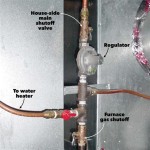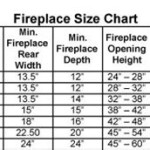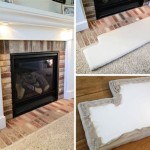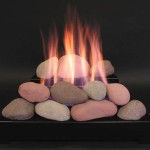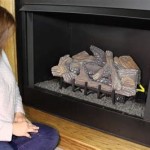Wood Fireplace Stoves: Efficiency and Ambiance
Wood fireplace stoves represent a significant advancement in home heating technology, combining the visual appeal of a traditional fireplace with the efficiency and control of a modern wood stove. These appliances offer a compelling alternative to both open fireplaces, known for their aesthetic charm but relatively low efficiency, and freestanding wood stoves, which excel in heating performance but may lack the built-in look desired by some homeowners. Understanding the features, benefits, and considerations associated with wood fireplace stoves is crucial for making an informed decision when selecting a heating appliance.
A wood fireplace stove, also referred to as a wood-burning fireplace insert, is designed to be installed directly into an existing masonry fireplace opening. This contrasts with freestanding wood stoves, which are typically placed away from walls and require a dedicated venting system. The insert design allows homeowners to upgrade their existing fireplaces, which often lose significant heat up the chimney, into efficient heating sources without undertaking extensive renovations.
The operation of a wood fireplace stove revolves around the controlled combustion of wood within a sealed firebox. This controlled environment allows for more complete combustion, leading to higher heating efficiency and reduced emissions. Air is drawn into the firebox through adjustable vents, regulating the rate at which the wood burns. The heat generated is then radiated outward into the room, and often, a blower system is incorporated to further distribute the warmth. Exhaust gases are vented through a flue liner that extends up the existing chimney.
Improved Heating Efficiency
One of the primary advantages of a wood fireplace stove is its significantly improved heating efficiency compared to an open fireplace. Traditional fireplaces are notoriously inefficient, often losing as much as 90% of the heat they generate up the chimney. This is due to the large opening that allows for significant airflow, drawing heat out of the room. Wood fireplace stoves, on the other hand, are designed to maximize heat retention and minimize heat loss.
The sealed firebox of a wood fireplace stove prevents the uncontrolled airflow that plagues open fireplaces. By carefully controlling the air supply, the stove achieves more complete combustion of the wood, extracting more heat energy in the process. Additionally, the metal firebox heats up and radiates warmth into the room, a process significantly more effective than the radiant heat provided by an open fire. Many models also incorporate a blower fan that circulates the heated air throughout the room, further enhancing heat distribution.
The efficiency of a wood fireplace stove is typically measured as a percentage, representing the proportion of the wood's energy that is converted into usable heat. Modern wood fireplace stoves often achieve efficiencies of 70% or higher, a stark contrast to the 10-20% efficiency of a traditional fireplace. This increased efficiency translates to lower fuel consumption, reduced heating costs, and a smaller environmental impact.
The use of catalytic or non-catalytic combustion systems further enhances the efficiency and reduces emissions of wood fireplace stoves. Catalytic combustors are coated with a catalyst that promotes the combustion of smoke and other unburned gases, resulting in cleaner emissions and more heat. Non-catalytic stoves achieve cleaner combustion through advanced firebox designs that promote turbulence and mixing of air and fuel.
Enhanced Safety Features
Beyond improved efficiency, wood fireplace stoves offer enhanced safety features compared to open fireplaces. Open fireplaces pose several safety risks, including the potential for sparks and embers to escape and ignite nearby materials, and the risk of creosote buildup in the chimney, which can lead to chimney fires. Wood fireplace stoves mitigate these risks through their closed firebox design and controlled combustion process.
The enclosed firebox of a wood fireplace stove prevents sparks and embers from escaping into the room, significantly reducing the risk of accidental fires. The door of the stove is typically made of glass, allowing homeowners to enjoy the view of the fire while maintaining a safe barrier. Some models also feature a spark arrestor screen that further prevents stray embers from escaping.
The controlled combustion process within a wood fireplace stove also reduces the buildup of creosote in the chimney. Creosote is a flammable byproduct of incomplete combustion that can accumulate on the inner walls of the chimney. If it builds up excessively, it can ignite and cause a dangerous chimney fire. The more complete combustion achieved by wood fireplace stoves, particularly those with catalytic or non-catalytic systems, minimizes creosote formation.
Even with the improved safety features of a wood fireplace stove, proper installation and maintenance are essential. A professional installer should ensure that the stove is properly sized for the fireplace opening and that the flue liner is correctly installed. Regular chimney inspections and cleanings are also crucial to prevent creosote buildup and ensure safe operation.
Environmental Considerations
The environmental impact of wood-burning appliances is a growing concern, particularly regarding particulate matter emissions. Wood fireplace stoves, however, can be a more environmentally friendly heating option compared to older, less efficient wood stoves and open fireplaces. Modern wood fireplace stoves are designed to meet stringent emission standards set by the Environmental Protection Agency (EPA), significantly reducing their impact on air quality.
The EPA sets limits on the amount of particulate matter that wood stoves and fireplace inserts can emit. These standards have become increasingly stricter over time, driving manufacturers to develop cleaner-burning technologies. Wood fireplace stoves that meet EPA certification are significantly cleaner burning than older, non-certified models.
The use of seasoned wood is also crucial for minimizing emissions from wood-burning appliances. Seasoned wood has a lower moisture content than green wood, allowing it to burn more completely and produce less smoke. Burning green wood can also lead to increased creosote buildup in the chimney.
While wood-burning appliances do emit particulate matter, the impact can be mitigated by using clean-burning stoves, burning seasoned wood, and following proper operating procedures. Wood can also be considered a carbon-neutral fuel source, as the carbon dioxide released during combustion is offset by the carbon dioxide absorbed by trees during their growth.
When selecting a wood fireplace stove, it is important to consider the size of the area to be heated, the efficiency of the stove, and the emission rating. Consulting with a qualified installer can help ensure that the stove is properly sized and installed for optimal performance and safety. Regular maintenance, including chimney inspections and cleanings, is essential for maintaining the efficiency and safety of the appliance.
The overall cost of a wood fireplace stove includes the purchase price of the stove, the installation cost, and the ongoing cost of fuel. While the initial investment may be higher than that of an open fireplace or a less efficient wood stove, the long-term savings in fuel costs and the improved safety and environmental performance can make a wood fireplace stove a worthwhile investment. The aesthetic appeal of a fireplace insert also enhances the ambiance of the home.
Wood fireplace stoves offer a blend of traditional aesthetics and modern heating technology. Their improved efficiency, enhanced safety features, and reduced environmental impact make them a compelling option for homeowners seeking a reliable and visually appealing heating source. By carefully considering the factors outlined above, homeowners can select a wood fireplace stove that meets their specific needs and enhances the comfort and value of their homes.

Freestanding Wood Burning Stoves Sierra Hearth And Home

Wood Burning S Hearthstone Stoves Vermont

Wood Stoves Vs Fireplaces Burning Hearth S

Stoves Wood Gas Pellet Lopi

Supreme Novo 24 Wood Stove Friendly Fires

Suspended Wood Burning Stoves Bonfire Fireplaces

Stoves Wood Gas Pellet Lopi

How To Heat Your House With Just A Wood Burning Stove Chesneys

How To Buy A Wood Stove Buyer S Guide From Regency

Wood Burning Stoves For



